
INTERNATIONAL JOURNAL OF EXPERIMENTAL PATHOLOGY
Scope & Guideline
Driving Progress Through Peer-Reviewed Research
Introduction
Aims and Scopes
- Pathological Mechanisms in Disease:
Research aimed at uncovering the fundamental mechanisms underlying various diseases, particularly focusing on how the extracellular matrix (ECM) contributes to disease pathology. - Innovative Experimental Techniques:
Utilization of advanced experimental methodologies, including in vivo models, gene therapy, and proteomics, to investigate disease mechanisms and potential therapeutic targets. - Matrix Biology and Tissue Engineering:
Studies emphasizing the role of the extracellular matrix in tissue repair, regeneration, and the development of innovative scaffolds for regenerative medicine. - Molecular and Cellular Interactions:
Exploration of the molecular pathways and cellular interactions that drive pathology, including the involvement of microRNAs, signaling pathways, and immune responses. - Translational Research:
Research that bridges the gap between basic science and clinical applications, particularly in understanding the implications of findings for therapeutic interventions in human diseases.
Trending and Emerging
- Extracellular Matrix (ECM) Dynamics:
A growing focus on the role of ECM in various diseases, particularly how ECM remodeling affects cellular behavior and disease progression, highlighting its importance in both pathology and therapy. - MicroRNA and Gene Regulation:
Increased publications on the role of microRNAs in regulating gene expression and their implications in various diseases, indicating a trend towards understanding post-transcriptional regulation in pathology. - Immune Response and Inflammation:
Emerging research on the role of the immune system and inflammatory processes in disease pathology, reflecting a broader understanding of how immune mechanisms influence disease outcomes. - Regenerative Medicine and Tissue Engineering:
A surge in studies related to regenerative medicine, particularly focusing on using stem cells and bioengineered tissues to repair or replace damaged organs and tissues, showcasing a significant trend in translational research. - Novel Therapeutic Strategies:
An increasing interest in innovative therapeutic approaches, including gene therapy and targeted treatments, which are becoming central to research as the field looks for new solutions to complex diseases.
Declining or Waning
- Traditional Histopathology Techniques:
There is a noticeable reduction in studies relying solely on traditional histopathological methods, as the field increasingly embraces molecular and genetic approaches to understand diseases. - Animal Models of Disease:
Although animal models are still relevant, there is a trend towards using more sophisticated in vitro systems, including organoids and 3D cultures, which may indicate a waning interest in basic animal studies for certain pathologies. - Basic Biochemical Analysis:
Papers focusing on basic biochemical analyses without integrating broader biological contexts or advanced technologies are becoming less prevalent, as the field moves towards more integrative and systems biology approaches.
Similar Journals

Skeletal Muscle
Innovating the future of muscle biology and healthcare.Skeletal Muscle is a prestigious open access journal published by BMC, dedicated to advancing the field of muscle biology and its associated disciplines. With an ISSN of 2044-5040, this journal has consistently been a beacon of knowledge and innovation since its inception in 2011. Based in the United Kingdom, Skeletal Muscle has established an impressive reputation as reflected in its category quartile rankings for 2023, achieving Q1 status in Cell Biology, Molecular Biology, and Orthopedics and Sports Medicine. This esteemed journal holds notable Scopus rankings, including a remarkable 12th place out of 321 in Orthopedics and Sports Medicine, positioning it in the 96th percentile. The journal is committed to disseminating high-quality, peer-reviewed research that fosters collaboration among scholars, healthcare professionals, and students alike. With a mission to explore the intricate biological mechanisms underlying skeletal muscle physiology and its impact on health and disease, Skeletal Muscle plays a vital role in shaping the future of research in this critical area, ensuring that cutting-edge findings are accessible to all.
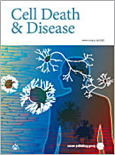
Cell Death & Disease
Exploring the frontiers of cell biology and therapeutic innovation.Cell Death & Disease, published by SpringerNature, is a premier open-access journal dedicated to disseminating high-quality research on the mechanisms and implications of cell death, disease pathology, and therapeutic responses. Since its inception in 2010, the journal has quickly established itself within the top tier of academic publishing, achieving a notable impact factor and earning Q1 rankings in several critical categories including Cancer Research, Cell Biology, Cellular and Molecular Neuroscience, Immunology, and Medicine (miscellaneous). With its commitment to open access, Cell Death & Disease ensures that groundbreaking research is available to a global audience, fostering collaboration and advancing knowledge across disciplines. Residing at the forefront of crucial scientific discourse, this journal not only attracts submissions from leading researchers but also significantly influences the fields of molecular biology, immunology, and neurology. By bridging the gap between basic science and clinical applications, it provides vital insights for professionals, academicians, and students alike.

Genes & Diseases
Unlocking the secrets of genes to combat diseases.Genes & Diseases, published by KEAI PUBLISHING LTD, is a premier open-access journal dedicated to advancing the fields of genetics, biochemistry, and molecular biology. Established in 2014 and headquartered in Beijing, China, this journal has quickly risen to prominence, securing a place in the prestigious Q1 quartile in Biochemistry and Genetics (clinical), as well as Q2 in Cell Biology and Q1 in Molecular Biology as of 2023. With a commitment to disseminating cutting-edge research, Genes & Diseases serves as a critical platform for researchers, professionals, and students alike, ensuring that high-quality scientific work is openly accessible to the global community. The journal's exceptional impact is underscored by its selective Scopus rankings, which reflect its influence and relevance in key scientific domains, making it an essential resource for those exploring the intersections of genetics and disease pathology.
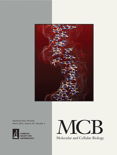
MOLECULAR AND CELLULAR BIOLOGY
Pioneering Research in Cell Biology ExcellenceMOLECULAR AND CELLULAR BIOLOGY, published by TAYLOR & FRANCIS INC, stands as a preeminent platform for researchers, professionals, and students engaged in the dynamic field of molecular and cellular biology. Established in 1981 and ongoing into 2024, the journal features cutting-edge research that spans across vital sub-disciplines, garnering a strong impact in its contributions to the scientific community. With an impressive Q2 ranking in Cell Biology and Q1 ranking in Molecular Biology for 2023, it consistently publishes high-quality articles that reflect the latest advancements and discoveries within the field. The journal is particularly well-regarded for its rigorous peer-review process and commitment to scientific excellence, making it an invaluable resource for those seeking to deepen their understanding of molecular mechanisms and cellular processes. Although not open access, the journal offers diverse access options for researchers to reach the latest findings. By maintaining a strong focus on biochemistry, genetics, and molecular biology, MOLECULAR AND CELLULAR BIOLOGY remains essential reading for anyone looking to contribute to or stay informed about significant developments within this pivotal area of study.

STEM CELLS AND DEVELOPMENT
Empowering the Future of Regenerative MedicineSTEM CELLS AND DEVELOPMENT, published by Mary Ann Liebert, Inc., is a leading peer-reviewed journal dedicated to the rapidly advancing fields of stem cell biology and developmental science. With an ISSN of 1547-3287 and an E-ISSN of 1557-8534, the journal encompasses a broad range of topics central to understanding stem cells' roles in development and regeneration processes. It holds a prestigious standing within its category quartiles, ranking Q3 in Cell Biology, Q2 in Developmental Biology, and Q2 in Hematology for 2023. With its convergence from 2004 to 2024, STEM CELLS AND DEVELOPMENT fosters an innovative platform for researchers, professionals, and students to disseminate groundbreaking research, share insights, and explore novel therapeutic approaches. Open access options enhance the journal's visibility and accessibility, promoting a collaborative exchange of information among the scientific community. Positioned at the forefront of stem cell research and its applications, this journal is vital for anyone seeking to stay informed about the latest advancements and trends within these critical areas of study.

CELL AND TISSUE RESEARCH
Pioneering Discoveries in Cell and Tissue ScienceCELL AND TISSUE RESEARCH, published by Springer, is a premier journal dedicated to advancing the field of cell biology, histology, pathology, and forensic medicine. With a proud history dating back to its foundation in 1924 and continuing its legacy, this journal has established itself as a vital source for innovative research, facilitating the dissemination of significant findings that contribute to the understanding of cellular and tissue dynamics. Hailing from Germany, the journal exhibits an impressive standing in the academic community with a 2023 impact factor reflected in its category quartiles: Q2 in Cell Biology, Q1 in Histology, and Q1 in Pathology and Forensic Medicine. It ranks notably within multiple Scopus categories, including 32/208 in Pathology and Forensic Medicine and 13/62 in Histology, showcasing its high percentile rankings of 84th and 79th, respectively. Researchers, professionals, and students benefit from its extensive coverage and rigorous peer-review process that ensures the integrity and relevance of its published works, thus making it an essential resource in the scientific community. While it operates under a subscription model, its commitment to quality and impact makes it an indispensable journal for anyone engaged in cellular and tissue research.
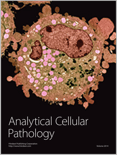
Analytical Cellular Pathology
Pioneering Discoveries in Analytical PathologyAnalytical Cellular Pathology, published by Hindawi Ltd, is a leading journal in the disciplines of Cancer Research, Cell Biology, and Pathology, and has been dedicated to advancing the field through open access since 1997. Based in Egypt, this journal plays a crucial role in disseminating cutting-edge research and innovative findings, fostering collaboration among researchers and professionals alike. With an impressive array of metrics, including its Q2 ranking in Pathology and Forensic Medicine and notable Scopus rankings, the journal attracts a diverse readership, ensuring significant impact in its categories. Designed to cater to the needs of both emerging and established scholars, Analytical Cellular Pathology promotes accessibility and exchange of knowledge, making it an indispensable resource for those engaged in modern cellular pathology research.
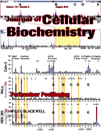
JOURNAL OF CELLULAR BIOCHEMISTRY
Transforming Knowledge into Breakthroughs in Cellular BiochemistryJournal of Cellular Biochemistry is a premier academic journal dedicated to advancing the field of biochemistry and cellular biology. Published by Wiley, this influential journal has a significant impact factor that underscores its relevance and authority within the scientific community. With its ISSN 0730-2312 and E-ISSN 1097-4644, the journal has been on the frontier of research since its inception in 1982, and is expected to continue publishing cutting-edge studies through 2024. As evidenced by its ranking in the 2023 Scopus Quartiles, it holds a rank of Q2 in Biochemistry and Q3 in both Cell and Molecular Biology, placing it among the top tiers of scientific journals in these disciplines. The Journal of Cellular Biochemistry serves as a vital resource for researchers, professionals, and students alike, providing a platform for the dissemination of innovative ideas and findings that shape our understanding of cellular processes and biochemical pathways. Though it does not currently offer Open Access options, its robust peer-review process ensures that each publication meets the highest academic standards, thus solidifying its esteemed position in the landscape of biochemical research.
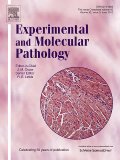
EXPERIMENTAL AND MOLECULAR PATHOLOGY
Unraveling molecular mysteries in pathology.EXPERIMENTAL AND MOLECULAR PATHOLOGY, a distinguished journal published by Academic Press Inc Elsevier Science, is recognized for its significant contributions to the fields of pathology, clinical biochemistry, and molecular biology. With an ISSN of 0014-4800 and an E-ISSN of 1096-0945, this journal provides a platform for the dissemination of high-quality research articles, reviews, and experimental studies that deepen our understanding of disease mechanisms and diagnostic pathways. Since its inception in 1962 and through its converged publication years, the journal has consistently maintained a solid impact in the academic community, achieving high Scopus rankings—ranked #15 in the field of Pathology and Forensic Medicine and #22 in Clinical Biochemistry, showcasing a commendable percentile standing of 93rd and 81st respectively in 2023. The journal is accessible through various academic libraries and institutional subscriptions, making it an essential resource for researchers, professionals, and students committed to advancing knowledge in these critical areas. With a categorization that includes Q1 rankings in Pathology and Forensic Medicine, EXPERIMENTAL AND MOLECULAR PATHOLOGY stands as a prominent venue for pioneering scientific inquiry and collaborative advancement in molecular diagnostics and therapeutic strategies.

DNA AND CELL BIOLOGY
Illuminating the Path of Cellular AdvancementsDNA AND CELL BIOLOGY, published by Mary Ann Liebert, Inc, is a distinguished journal in the realms of cell biology, genetics, and molecular biology, holding a notable position in its Q3 and Q2 quartile rankings across multiple academic categories as of 2023. With an ISSN of 1044-5498 and an E-ISSN of 1557-7430, this journal has been a pivotal platform for the dissemination of cutting-edge research since its inception in 1990, extending its coverage through 2024. Situated in the United States, the journal offers high-quality peer-reviewed articles, exploring significant advancements in biological sciences while fostering interdisciplinary collaborations within the research community. Though it currently does not offer open access, subscribed institutions and individual readers benefit from its rich repository of knowledge. The journal's rigorous standards and impactful content make it an essential resource for researchers, professionals, and students alike, aiming to stay at the forefront of discoveries influencing DNA and cellular dynamics.